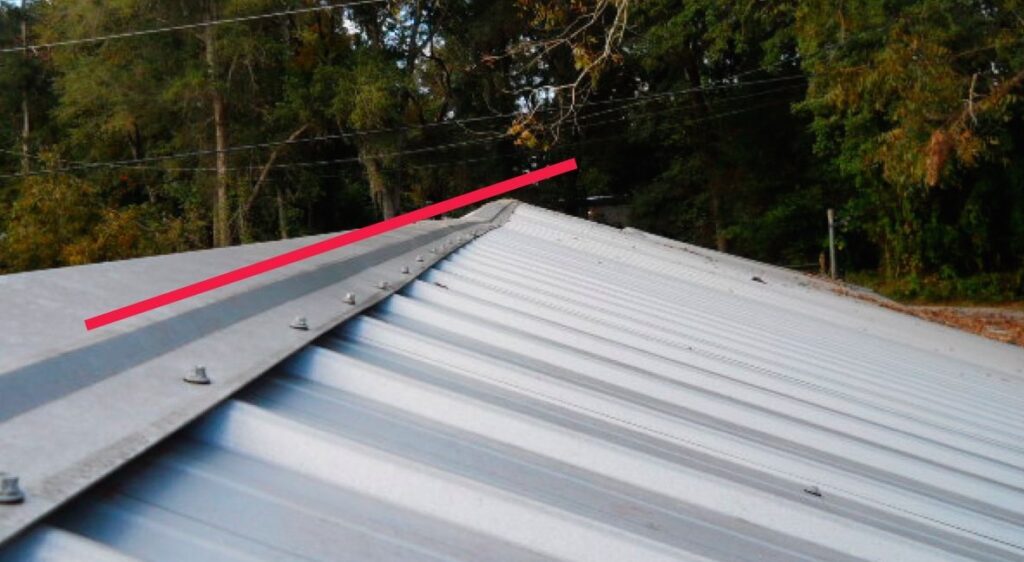12 Common Threats to Your Roof’s Structural Integrity


When it comes to keeping your home safe and secure, the roof can often be overlooked or underestimated. The roof of your home is a fundamental part of your property’s overall structural integrity, and plays an integral role in protecting the interior of your home from the elements.
A weak or damaged roof can create long-term problems such as water damage, rotting wood, or even an unstable foundation. In order to ensure your home’s longevity and safety, it is important to keep your roof in good condition and take a proactive approach to preventing damage.
This article will cover the most common causes of roof structure damage, best practices for prevention, warning signs of a weakened roof structure, steps to take when roof damage is detected, and preventative measures that homeowners can take to extend the life of their roof.
What are the most common factors that threaten a roof’s structural integrity?
Water Damage
One of the most common causes of roof deterioration is water damage. Rain, sleet, and snow can all erode away at the protective layers of your roof. To prevent such issues, you need to regularly maintain your roof. Check out our article on the best 12 ways to proactively protect your roof’ for practical tips.
Constant exposure to cold and wet weather also accelerates the breakdown of shingles, tiles, and other materials. Make sure to check for bad drainage systems, unsealed seams around vents, and drips near the eaves. Ensuring that your gutters are regularly cleaning and checking to make sure there are no clogs is key to avoiding water damage.
Sunlight / UV Rays
The sun can act as a silent enemy to the roof of your home. Prolonged exposure to direct sunlight can cause the roofing materials to become brittle and dry out over time. Sunlight also contributes to the growth of moss and algae, which can trap moisture in your roof and speed up the deterioration process. Installing a reflective coating can help reduce sun damage and keep your roof cool.
Trees
Having trees around your home can be great for aesthetic purposes, but they can also cause considerable damage to the roof. Roofs can be damaged by tree branches that rub against them and cause abrasions, fallen leaves and debris that block drains and restricts water runoff, potentially leading to leaks which are often hard to spot. Read our article on ‘Why it’s difficult to locate a roof leak on your own’ to learn more about this issue. Make sure to trim back any vegetation near your roof and clear away debris on a regular basis.
Hail
Hail storms can easily cause structural damage to your roof. Also, wind combined with hail can be particularly damaging. It’s important to understand that there are 3 Common Misconceptions About Wind Damage on Roofs. By reading this article, you’ll gain a better understanding of how these elements can impact your roof.
While larger hailstones can create dents and cracks in the roofing material, smaller pebbles can accumulate and lead to deterioration over time. Regularly inspecting your roof for storm damage should be a priority after every major storm.
Wind
High winds can easily strip away roofing materials and cause roofing membrane to become loose. Tornadoes and hurricanes are capable of tearing off entire pieces of the roof and leave your home exposed to the elements. It’s important to consider wind speed restrictions in your area when selecting a roofing system.
Snow
High winds can easily strip away roofing materials and cause roofing membrane to become loose. Tornadoes and hurricanes are capable of tearing off entire pieces of the roof and leave your home exposed to the elements. It’s important to consider wind speed restrictions in your area when selecting a roofing system.
Ice Dams
Ice dams are caused when melted snow refreezes at the eaves of your roof, forming chunks of ice. These can trap moisture and encourage granules to wash away from asphalt shingles, leading to costly repairs. Using proper ventilation and insulation techniques can help prevent ice dams from forming in the first place.
Ponding
Ponding is when water collects and stagnates at specific areas on the roof. If left untreated, this moisture can lead to serious damage. Inspect your roof regularly to make sure that water is draining properly and there are no areas where ponding may occur.
Pests/Animals
Pests and animals can cause considerable damage to your roof, creating holes and allowing access to the attic of your home. Small holes created by rodents can lead to water damage and provide the perfect breeding ground for mold.
Clogged Gutters
Gutters play an essential role in providing protection to your roof. Clogged gutters can easily lead to water buildup around the edge of the roof and cause serious damage. Regularly clean your gutters and ensure that they are functioning properly.
Time
Time is an unavoidable factor when it comes to roof health. Even the highest quality roofing materials break down over time due to normal wear and tear, and must eventually be replaced. Depending on the roofing material you choose, having regular inspections and making small repairs when needed can go a long way in ensuring the longevity of your roof.
Poor Installation
In some cases, poor installation is the root cause of structural damage. When choosing a roofing material like asphalt shingle, it’s crucial to ensure the quality of installation. Find out the 4 Qualities to look for in good asphalt shingle roofing in our helpful guide.
Signs That Indicate Weak Roof Structure
Your Ceilings Are Sagging
Sagging ceilings are an indication of a roof that is under too much pressure. This could be a sign that your roof has reached a point where it’s beyond repair, and you may need to consider a replacement. Learn more about when a roof is beyond repair and a roof replacement is needed in our detailed guide.
You Have Attic Leaks
Leaks in your attic can be the result of a number of different causes, but it’s usually a sign that your roof is losing its structural integrity. If left untreated, a leaking roof can lead to water damage and mold growth.
Windows and Doors Are Hard to Close or Open
If your windows and doors seem harder to open and close, it could mean that your roof is sagging and pulling on the framing of the walls. This can be a sign that the roof is succumbing to wear and tear over time.
The Ridge Line Is Bowed
If you notice that the ridge line of your roof is curved or bowed, then it’s likely that there is too much pressure being exerted on it. This could mean that the support beams beneath it are failing, and it’s time to call a professional for a thorough inspection.


Your Chimney Is Cracked
Cracks in your chimney can be a sign that your roof is compromising its structural integrity. Cracks can quickly grow in size, leaving your house susceptible to leaks and other forms of water damage.
Creaking or Popping Sounds
A creaking, cracking, or popping noise is often an indicator that your roof is starting to weaken. If you hear this kind of sound coming from within your house, then it’s a good idea to get a professional to inspect it.
Excessive Roof Wear
If you notice that there are missing shingles, signs of water damage, or any other signs of excessive wear on your roof, it’s time to call a professional for an inspection. These signs can be indicative of a weak roof and may require repairs or replacement.
Conclusion
A roof’s structural integrity is essential for protecting the interior of your home and preserving its value. Being proactive and taking preventative measures is the best way to ensure that your roof remains in good shape. Regular inspections can help detect issues such as moss or algae growth, which can be harmful to your roof. Learn more about ‘How does moss or algae kill your roof?’ in our dedicated article. Taking the right steps now can save you money in the long run and protect your home for years to come.
We’ve uncovered the common factors that threaten your roof’s structural integrity, shared signs that indicate a weakening roof structure, and provided a roadmap for preserving your roof’s health. But remember, it’s not enough to simply read and understand these points. Your next step is crucial: it’s time to take action. Begin with a thorough inspection of your roof. If you notice any warning signs, don’t wait—reach out to a professional immediately.
Commit to regular maintenance and, if needed, be open to the idea of repairs or replacement. You are the first line of defense in protecting your home and preserving its value. We’re here to help, with expert advice and comprehensive guides.
- Burnaby Roofers
- New Westminster Roofers
- Coquitlam Roofers
- Port Coquitlam Roofers
- Port Moody Roofers
- Delta Roofers
- Ladner Roofers
- Vancouver Roofers
- North Vancouver Roofers
- West Vancouver Roofers
- Richmond Roofers
- Surrey Roofers
- White Rock Roofers
- Maple Ridge Roofers
- Pitt Meadows Roofers
- Langley Roofers
- Powell River Roofers
Start with our article on ‘The Best 12 Ways to Proactively Protect Your Roof‘ and build your knowledge from there. The safety of your home depends on the strength of your roof, and the strength of your roof depends on you. Don’t delay—act today.
